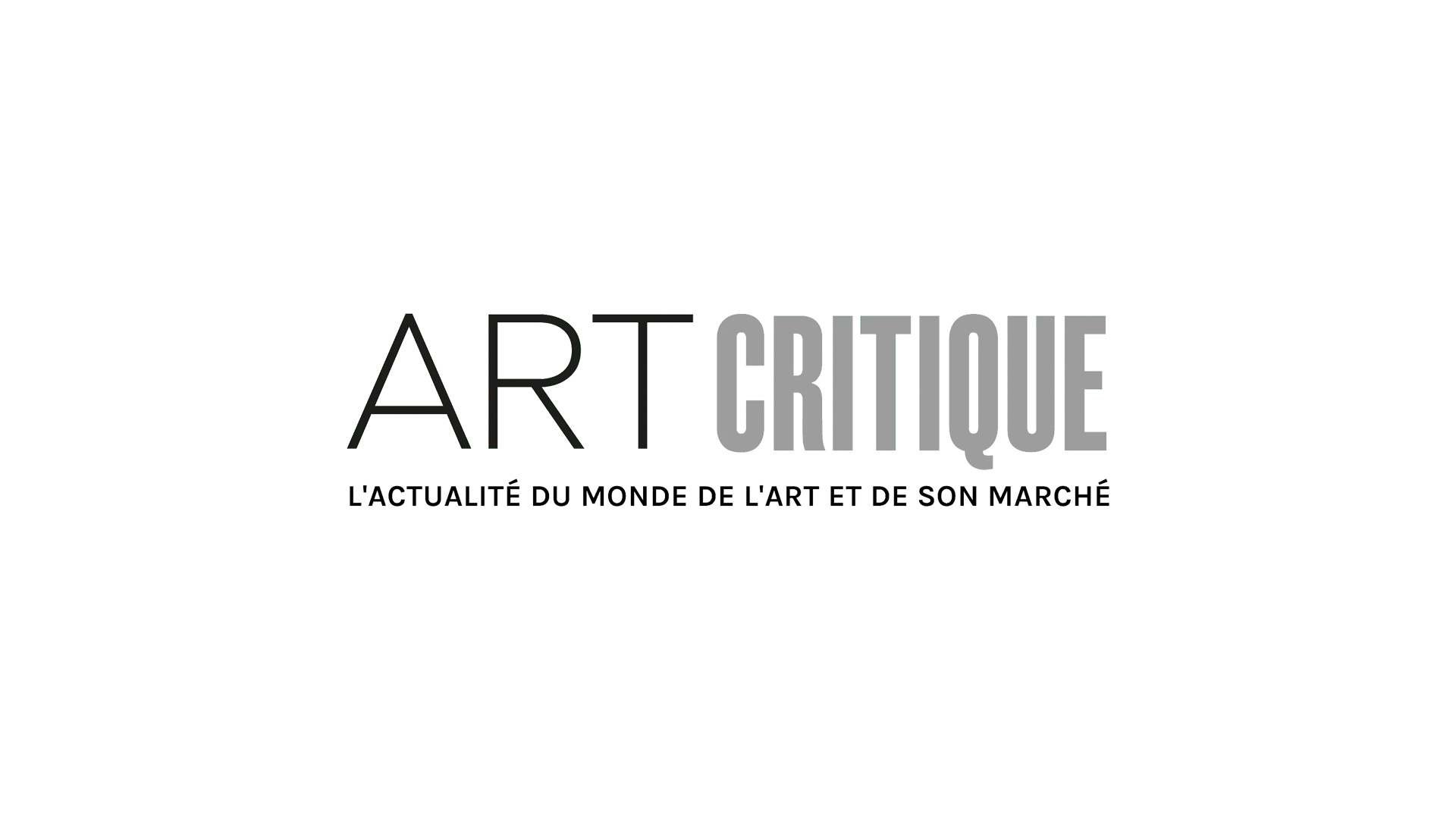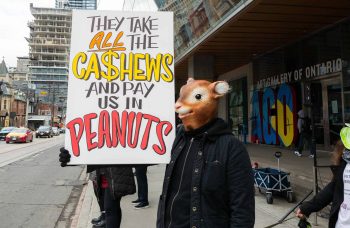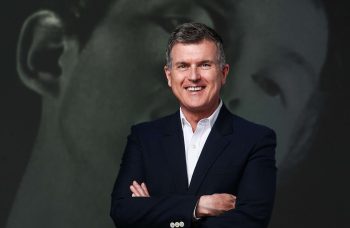Achille Mauri invites us into his apartment in Milan on the Palazzo Cagnola. Works by artists like Alighiero Boetti, Lucio Fontana, Fabio Mauri, Man Ray and Andy Warhol adorn his walls.
Orianne Castel :Your apartment contains hundreds of paintings and sculptures. Most of them are on display, others, stored here and there, are still unwrapped. When did you start building your impressive collection?
Achille Mauri : I started collecting when i was very young, when I started to routinely save the drawings that my brother Fabio Mauri was making. Then in the 1960s, I moved to Rome by way of dell’Oca next to a small bar called Café Rosati which was frequented by many artists. There I met people like comme Dorazio, Perilli, Turcato, Rotella, Duchamp, Twombly, Schifano, and even Festa. They weren’t very well known at the time. I bought their work for next to nothing. Even today, it’s rare that I buy work that already has value. I prefer to collect the work of young artists. I visit shows and sometimes I’m lucky enough to find work that captures my attention and quite often these are paintings that aren’t worth more than 2,000 euros. I buy people’s pieces because I want to be able to contemplate them over and over again.

Mao, 1972
Photographer: Guillaume de Sardes
O.C. : You say that you often go to shows.That’s a different approach from your beginnings as an amateur. The art market itself has evolved quite a bit in recent years. What do you think about how it’s operating?
A,M : The art market right now is completely baffling, It’s a huge market that is contolled by just a few. Auction houses and major galleries like Hauser and Wirth or Gagosian make incredible sales while others organize exhibits but sell almost nothing. And then, there’s an assortment of organizations, like shows, that induce an art regression. Many so-called artists exhibited there aren’t able to gain a foothold in art history. They don’t reflect upon what they’re doing, if it’s something new, if it’s a repetition, if it has some kind of meaning in relation to what already exists. It’s become really hard to manoevre oneself in the world of contemporary art. In a very lovely boutique called Galerie des Offices in Florence, there are art books from all over the world, biennial and triennial catalogues from Istanbul, Venice and Taiwan … they’ve all been seen a thousand times already.

Marilyn, 1964 (Screens series)
Photographer: Guillaume de Sardes
O.C : You speak about the meaning of art, would you say that the consistency of your collection rests in the choice of works that hold a clear significance?
A.M : Yes, I appreciate work whose colours and shapes act like signs and evoke something in each one of us. The works that I like express the relationship that the artist has with the times they live in and it seems to me that there’s a lot that can be said about how our society works. Let’s take migration as an example. When I think about the many people who have died, I say to myself that it would be a good idea if artists from around the world would take an active interest. I don’t think we can go on with artists who take a block of stone or wood and make something from it without reflecting on the meaning of their approach: what it says and especially what it changes.

Photographer: Guillaume de Sardes
O.C : We were discussing art and it’s link to society; you’re the president of the Fabio Mauri foundation whose goal is to promote your brother’s work. He’s a very politcally active artist who is against Nazism in particular. Can you tell us more about his work and his influences?
A.M : Fabio wasn’t influenced by any artistic trends, he was a trend himself and, most importantly, he never wanted to get trapped in a routine. He never subscribed to a process like so many artists who repeat a single idea over and over. We can look at Arman, for example, who made object assemblages or Lucio Fontana who sliced canvasses. For Fabio, each exhibit was a cylce that began and had to end. Picasso changed his technique 20 times. Having a quest is a very powerful way to live, repetition is boring.

Macchina per fissare acquerelli, 2007
Ferro, legno, gomma (cm. 500×147,5×198)
All the World’s Futures – Padiglione Centrale, 56° Esposizione Internazionale d’Arte, Venezia 2015
Photographer: Sandro Mele
Courtesy the Estate of Fabio Mauri and Hauser & Wirth
O.C. :Can you tell us about what Fabio Mauri is doing right now, in which collections can his work be found and which exhibits feature him?
A.M. : Fabio’s art is represented in almost all Italian museums. His work can be found at The Castle of Rivolin in Turin and in the National Gallery of Modern Art (GNAM) in Rome. In 2017 the Museo d’Arte Contemporanea Donnaregina (MADRE) in Naples dedicated a major show to him as well as the Galleria d’arte moderna e contemporanea (GAMeC) in Bergamo. He was also shown in New York by the Hauser & Wirth gallery in 2018. When his work was featured in the first pavilion in the Venice Biennale, it was also very successful. Fabio is a great writer as well and at the moment we’re working on creating a forum that will bring together all of his productions. Then a descriptive catalogue will most likely be published, but for now what’s most urgent is to arrange all the material about his work in order to make it accessible to as many people as possible. That’s the focus of Valérie de Costa’s book, “Fabio Mauri – The Past in Acts”, published this year in a bilingual French/English edition by Presses du réel.

Luna, 1968
Teatro delle mostre – Galleria La Tartaruga, Roma
Photographer: Giuliani
Courtesy the Estate of Fabio Mauri and Hauser & Wirth
O.C : Two of Fabio Mauri’s pieces are also being shown right now at La Maison Rouge in Paris whose latest exhibit is on the theme of flight. One of them is a sculpture titled “Machina per fissare acquarelli “ and the other is an installation called “Luna”. Have you had the chance to talk about these two pieces with your brother? Do you know what his intentions were?
A.M : Fabio created the installation which he called Luna in 1968, he produced it as part of the “Il teatro delle mostre” exhibit conceived by gallery owner Plinio de Martiis. We were in a period when the first space programs were being developped. Using a fake space capsule filled with polystyrene beads Fabio wanted to give spectators the opportunity to experience for themselves what it would be like to be in this distant place which was becoming more and more tangible in stories during that time. He wanted to play on the duality of real/imaginary. That was also the intent behind Machina per fissare acquarelli which was a kind of image-making machine.

Photographer: Guillaume de Sardes






